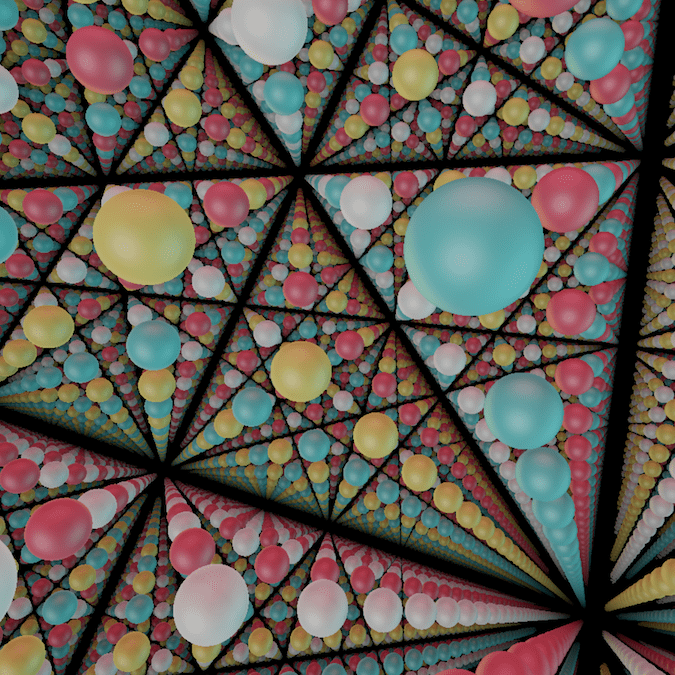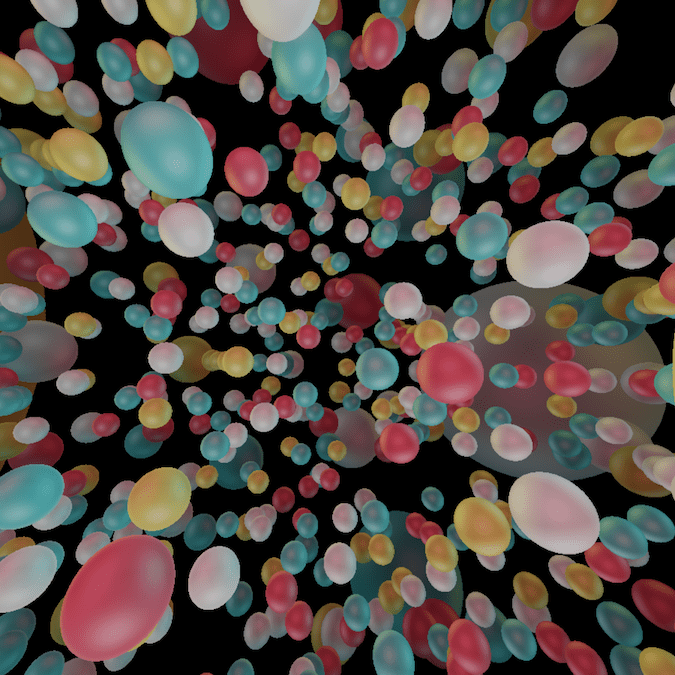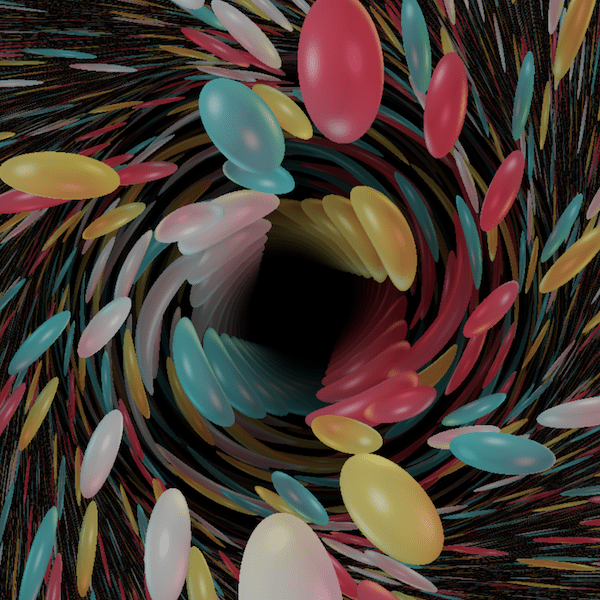Unit tangent bundle
Given a 2-dimensional compact manifold $M$, its unit tangent bundle $T^1M$ is a 3-dimensional compact manifold. Depending on the curvature of $M$, this new space carries one of the eight Thurston geometries.
- If $M$ has positive curvature, then $T^1M$ is modelled on $S^3$.
- If $M$ has zero curvature, then $T^1M$ is modelled on $\mathbb E^3$.
- If $M$ has negative curvature, then $T^1M$ is modelled on $\widetilde{\rm SL}(2, \mathbb R)$.

The euclidean space $\mathbb E^3$
The euclidean space corresponds to the “usual” 3D geometry we learn at school. It is the geometry of the flat real 3-dimensional vector space $\mathbb R^3$.

The spherical space $S^3$
The space $S^3$ is the 3-dimensional analogue of the usual sphere in 2 dimensions. It is an isotropic space (all the directions play the same role). Among the eight Thurston geometries, it is the only compact one. It can be seen as the unit tangent bundle of the 2-sphere. This point of view is also knwon as the Hopf fibration.

The universal cover of ${\rm SL}(2,\mathbb R)$
${\rm SL}(2,\mathbb R)$ is the set of all $2 \times 2$-real matrices with determinant one. The space $\widetilde{\rm SL}(2,\mathbb R)$ is its universal cover. There are several ways to think about this space. ${\rm SL}(2,\mathbb R)$ is for instance the unit tangent bundle of the hyperbolic plane $\mathbb H^2$. This point of view gives $\widetilde{\rm SL}(2,\mathbb R)$ a structure of a twisted metric line bundle over $\mathbb H^2$, which can be thought as a hyperbolic analogue of the Hopf fibration